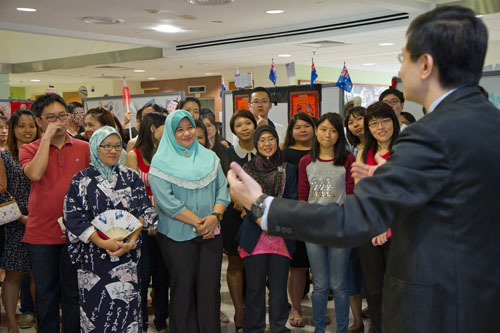
The Program of International Student Assessment (PISA) é um exame realizado a cada três anos para 15 year olds around the world in reading, math and science. In the recent 2012 teste, 65 countries and education systems participated: http://www.oecd.org/pisa/keyfindings/PISA-2012-results-snapshot-Volume-I-ENG.pdf. While the US did not perform well, impressive PISA gains were made in low-performing countries, such as Qatar and Kazakhstan. Some higher performing nations, such as Singapore, Polônia, Germany and Italy, also made significant advances. PISA results are often used by governments around the world to justify decisions they wish to take on education policy. But should PISA be allowed to become the conclusive world exam for our kids? Hoje em A Pesquisa Global para a Educação, I have asked Pak Tee Ng, Tony Wagner and Randi Weingarten to share their perspectives.
Dr. Pak Tee Ng é Dean Associado, Aprendizagem liderança, Office of Graduate Studies and Professional Learning at the National Institute of Education, Nanyang Technological University, República de Singapura. Dr. Tony Wagner is Expert in Residence at Harvard University’s Innovation Lab. Randi Weingarten is President of the American Federation of Teachers.
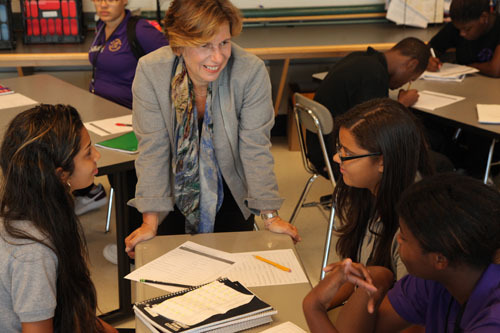
The PISA results provide some useful information about education systems. No entanto, many subjects are not tested by PISA. How much credit should individual countries give to the PISA results as an accurate country by country comparison of student outcomes in Math, Ciência e Reading?
Tony Wagner: Unlike other tests such as NAEP or TIMSS, PISA tests students’ ability to apply what they have learned — to use knowledge in new situations, not just recall it. And so I think the broad trends that are revealed in the testing are very important to consider. The fact that after 11 years of No Child Left Behind, the US shows no progress in PISA whatsoever — while many other countries have made great strides — is perhaps the most significant finding for us. It tells us we are using the wrong strategies to improve education.
PAK NG: PISA is one of the few recognized international comparison tools for math, science and reading performance. Because of globalization, educational benchmarking with others provides a country an indication (not absolute measure) of its current and future competitiveness in the global market. Assim, PISA findings are useful in their own ways. No entanto, PISA is not everything. It does not paint the entire picture. It does not test social skills or emotional maturity, or measure appreciation of sports and arts. Some have questioned the validity and reliability of the PISA tests, and whether certain jurisdictions ‘cheated’ on them. Mas, international comparisons in education standards can never be absolutely fair. As questões mais importantes que os países têm de colocar a si próprios são a razão pela qual estão a comparar uns com os outros e o que estão a fazer com os resultados para melhorar a educação dos seus filhos.. Os países devem tomar os resultados do PISA como uma referência útil, not as a report card.
Randi Weingarten: There is never a perfect measure, particularly given the large variability internationally. Dito isto, PISA has a lot of good information. Countries (incluindo os EUA) should use PISA results along with other information to inform the way we improve our schools. We can’t continue to just look at the horse race and sigh that the United States is still doing poorly and move on until the next PISA report. It is incumbent on all policymakers to work with educators, parents and other stakeholders to actually learn the lessons of the top-performing countries and do what we know will work to make schools more equitable and successful.
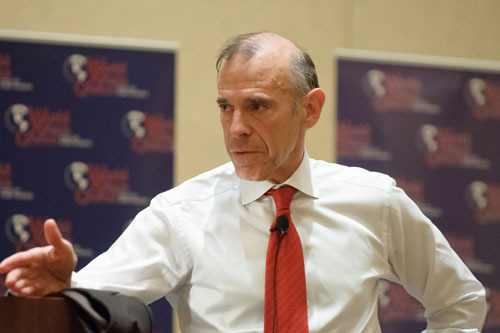
Successful education systems globally are working to create alternative pathways (por exemplo. vocational) instead of just academic ones for students to find success. Quais são seus pensamentos sobre este assunto?
Tony Wagner: Many of the most successful education systems — notably Finland — offer a career/technical pathway for students. In that country, nearly half of all students choose CTE (Career and Technical Education) over an academic curriculum. My research suggests that as many as half of the high school students in the US would also choose a high quality CTE curriculum if it were offered. With the un and under employment rate of recent college graduates now over 50% and the cost of college continuing to climb, a growing number of students are worried that a four year college education may not be the smart investment it once was. One of my biggest concerns about Common Core is that it appears to offer only a one size fits all college prep curriculum for all students.
Randi Weingarten: This is crucially important for our country. We must provide our students with fully supported, multiple tracks. The American Federation of Teachers has advocated high-quality CTE opportunities for years and we should look to countries that are successfully incorporating these programs, como Cingapura, Alemanha, and those in northern Europe.
I visited the CTE institute in Singapore, which was impressive. They have the same emphasis on CTE as they do on traditional academic study. It was a well-funded, highly productive school that prepared students to immediately move into the Singaporean economy and have a successful career in hundreds of exciting areas.
Here in the U.S. we need to look at more collaborative efforts between school districts, businesses and higher education. When done well, high-quality career and technical education provides graduates with employment in good-paying 21st-century jobs, establishes a solid foundation for further education, and makes a vital connection for students between their high school educations and a tangible, desirable future. These programs have been found to lower drop-out rates and give students a defined pathway to a productive life doing meaningful work.
PAK NG: A good education system provides a platform for different talents to flourish and different aspirations to be fulfilled. It helps students, with different needs, inclinations and strengths, find success in their areas of study, be those in arts, sports or technical education. It encourages each student to find identity, meaning, and purpose through their school lives. Assim, I support the drive for education systems globally to develop many pathways for students to find success in their different areas.
Em Cingapura, we take a balanced approach. Students who can do well academically are given opportunities to develop their academic potential. But we also commit vast resources to level up every student and create more pathways for students to find success in their areas of strength. We try to educate our students so that they will contribute to society when they are successful.
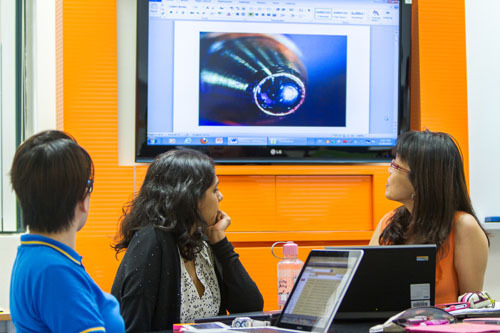
School systems globally can learn from each other’s practices, but given the unique cultural and developmental trajectories of individual countries, how easy or difficult is it to copy practices?
Tony Wagner: Countries cannot necessarily “cópia de” practices of other countries, but we can learn a great deal from trends that we see elsewhere. Por exemplo, other countries like Sweden that have invested heavily in school choice have seen their scores decline sharply. While countries that have made significant investments in radically improving their teacher preparation programs have seen dramatically improved PISA scores.
PAK NG: The strengths of other systems should inspire us to reflect on our own system. But we cannot copy practices. We have to understand the underlying principle behind the success of others and find our own way to success, based on our unique culture and contexts. Finland and Singapore have been used often as examples of educational success. Na Finlândia, all their teachers have a master’s degree. I do not think any education system can demand that of their teachers overnight! Em Cingapura, we have a national system for recruiting new teachers, training in-service teachers and developing school leaders. But one cannot take this idea and simply implement it in a decentralized system. The important lesson is to appreciate the underlying principle of having good teachers and school leaders, and taking their continuous professional development very seriously.
Randi Weingarten: Of course culture matters but there are clear lessons that cut across all cultures. Primeiro, teaching matters. We must build a profession of teaching that treats teachers as the educational experts they are. We must give our teachers the time, ferramentas, and support they need to succeed. Schools must assure that teachers have a say in the decisions that affect their classrooms. Mais importante, teachers need time to collaborate with colleagues, time to prepare their lessons so they are the best teachers they can be. We need to stop the top-down accountability that has silenced innovation and build a more horizontal structure in schools where teachers work together and are accountable to each other instead of to a test score.
Andreas Schleicher (Deputy Director for Education and Skills, OECD Special Advisor on Education Policy) has said time and again, “an inequitable school system can never be a high-performing school system.” This concept transcends culture. All the high performing systems take active steps to address equity in schools. This is a lesson the U.S. must learn as soon as possible. PISA study after PISA study has shown the high level of inequity in our schools. U.S. schools mainly rely on property taxes for funding, which means poor areas receive far less funding than wealthy districts. Conseqüentemente, those who need the most resources don’t get them.

Photos are courtesy of AFT, Pak Tee Ng and Tony Wagner
Na busca Global para a Educação, se juntar a mim e líderes de renome mundial, incluindo Sir Michael Barber (Reino Unido), Dr. Michael Bloco (EUA), Dr. Leon Botstein (EUA), Professor Clay Christensen (EUA), Dr. Linda, Darling-Hammond (EUA), Dr. Madhav Chavan (Índia), Professor Michael Fullan (Canadá), Professor Howard Gardner (EUA), Professor Andy Hargreaves (EUA), Professor Yvonne Hellman (Holanda), Professor Kristin Helstad (Noruega), Jean Hendrickson (EUA), Professor Rose Hipkins (Nova Zelândia), Professor Cornelia Hoogland (Canadá), Honrosa Jeff Johnson (Canadá), Senhora. Chantal Kaufmann (Bélgica), Dr. Eija Kauppinen (Finlândia), Secretário de Estado Tapio Kosunen (Finlândia), Professor Dominique Lafontaine (Bélgica), Professor Hugh Lauder (Reino Unido), Professor Ben Levin (Canadá), Senhor Ken Macdonald (Reino Unido), Professor Barry McGaw (Austrália), Shiv Nadar (Índia), Professor R. Natarajan (Índia), Dr. PAK NG (Cingapura), Dr. Denise Papa (US), Sridhar Rajagopalan (Índia), Dr. Diane Ravitch (EUA), Richard Wilson Riley (EUA), Sir Ken Robinson (Reino Unido), Professor Pasi Sahlberg (Finlândia), Professor Manabu Sato (Japão), Andreas Schleicher (PISA, OCDE), Dr. Anthony Seldon (Reino Unido), Dr. David Shaffer (EUA), Dr. Kirsten Immersive Are (Noruega), Chanceler Stephen Spahn (EUA), Yves Theze (Lycée Français EUA), Professor Charles Ungerleider (Canadá), Professor Tony Wagner (EUA), Sir David Watson (Reino Unido), Professor Dylan Wiliam (Reino Unido), Dr. Mark Wormald (Reino Unido), Professor Theo Wubbels (Holanda), Professor Michael Young (Reino Unido), e Professor Minxuan Zhang (China) como eles exploram as grandes questões da educação imagem que todas as nações enfrentam hoje. A Pesquisa Global para Educação Comunitária Página
C. M. Rubin é o autor de duas séries on-line lido pelo qual ela recebeu uma 2011 Upton Sinclair prêmio, “A Pesquisa Global para a Educação” e “Como vamos Leia?” Ela também é autora de três livros mais vendidos, Incluindo The Real Alice no País das Maravilhas.
Siga C. M. Rubin no Twitter: www.twitter.com/@cmrubinworld


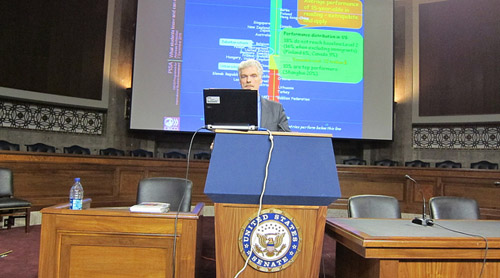
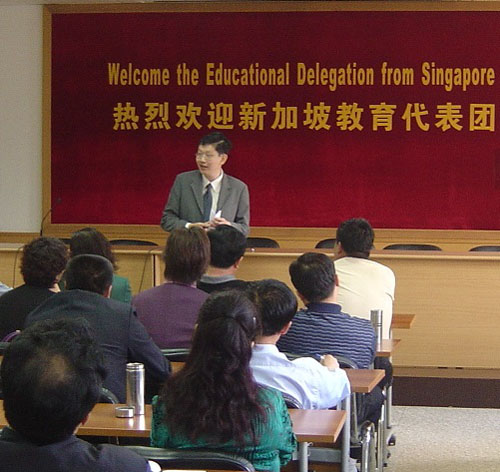
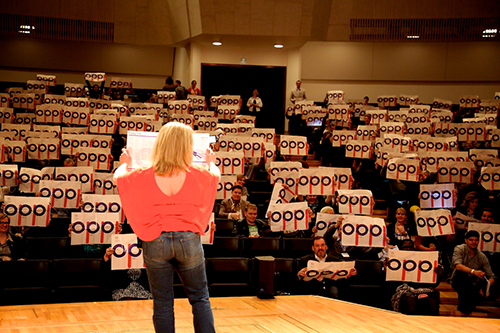
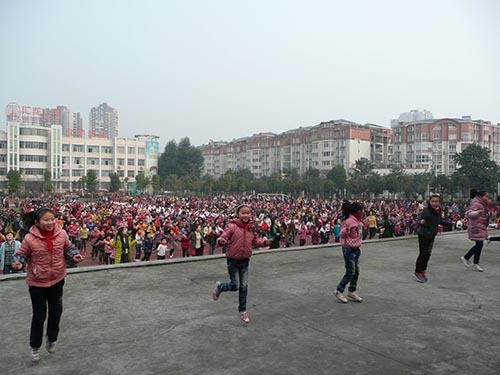
Comentários Recentes